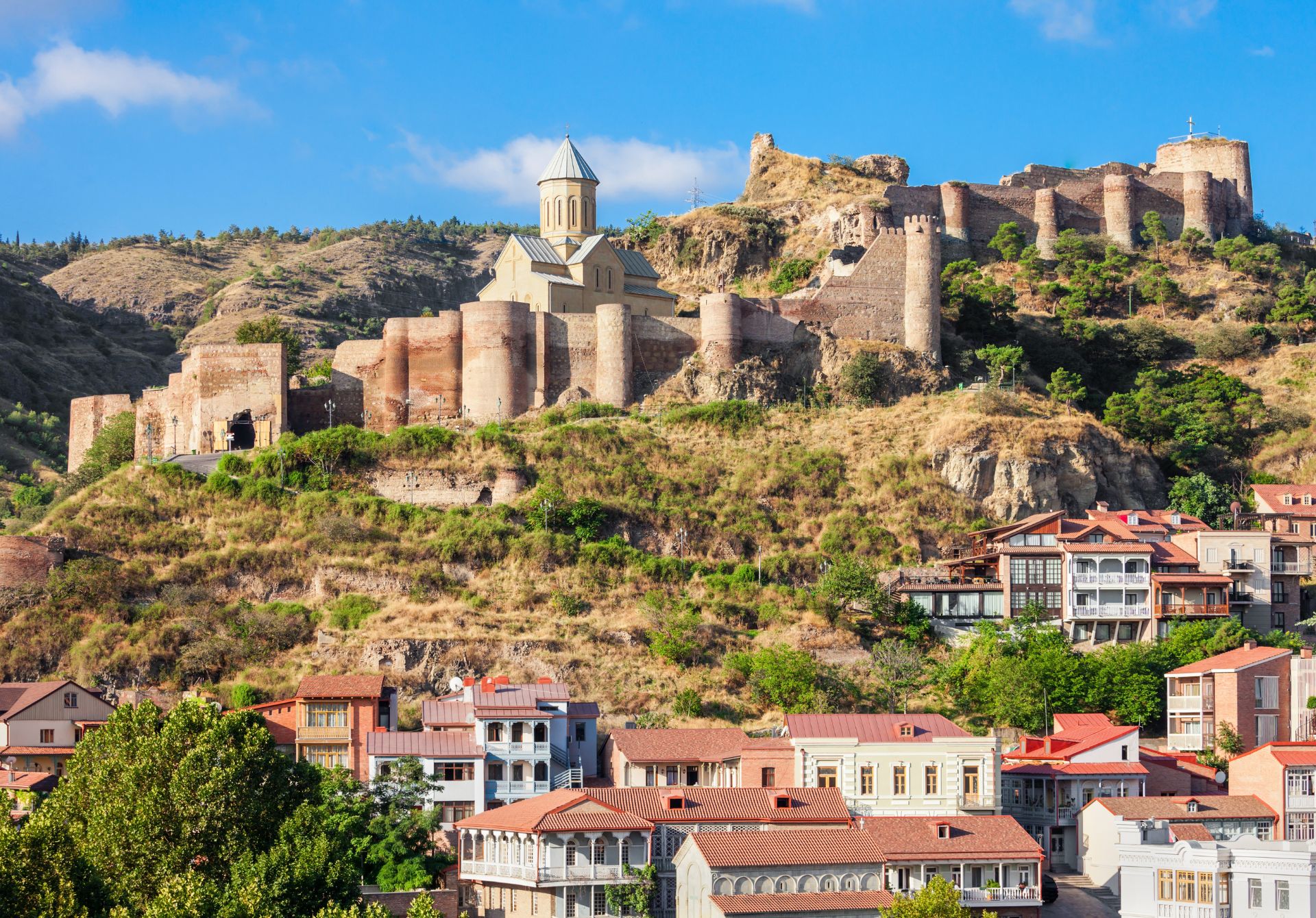Perched atop a steep hill overlooking the Georgian capital of Tbilisi, Narikala Fortress stands as a silent sentinel, its weathered walls bearing witness to nearly two millennia of history. This ancient citadel, often referred to as the “heart and soul of Tbilisi,” has played a crucial role in the city’s defense and development since its inception in the 4th century AD. Today, Narikala continues to captivate visitors with its commanding presence, offering breathtaking panoramic views of Tbilisi and serving as a tangible link to Georgia’s rich cultural heritage.
Historical Background
The origins of Narikala Fortress can be traced back to the 4th century AD when Persian rulers established a citadel on the site. Initially known as Shuris-tsikhe (Invidious Fort), the fortress was later expanded in the 7th century under Arab rule. It was during this period that the fortress acquired its current name, “Narikala,” which is derived from the Persian words “Narin-Qala” meaning “Little Fortress.”
Throughout its long history, Narikala has been conquered, destroyed, and rebuilt multiple times. Notable periods of reconstruction and expansion occurred during the reigns of King David the Builder (1089-1125) and King Demetre I (1125-1156) in the 12th century. These Georgian monarchs significantly strengthened the fortress, enhancing its defensive capabilities and cementing its status as a symbol of Georgian resilience.
Architectural Features
Narikala Fortress is an impressive example of medieval military architecture, showcasing a blend of Persian, Arab, and Georgian influences. The fortress complex covers an area of about 3,000 square meters and is composed of two walled sections on a steep hillside.
Key structures within the fortress include:
- The Upper Fortress: This section houses the main citadel and dates back to the 16th-17th centuries. It features thick stone walls and watchtowers that offer commanding views of the city below.
- The Lower Fortress: Built in the 5th century, this area contains the remnants of the original Persian structures and later Arab additions.
- St. Nicholas Church: Located within the fortress walls, this small Georgian Orthodox church was originally built in the 12th century. It was largely destroyed by fire in the 19th century but was painstakingly reconstructed in the 1990s.
- Secret Tunnel: A hidden passageway reportedly connected the fortress to the Mtkvari River, providing a means of escape and access to water during sieges.
Cultural Significance
Narikala Fortress holds immense cultural and historical significance for the people of Georgia. It has been a symbol of national identity and resilience, standing firm through centuries of invasions, earthquakes, and political upheavals. The fortress has been featured in countless works of Georgian literature, art, and folklore, cementing its place in the nation’s cultural imagination.
In recent years, Narikala has become a major tourist attraction, drawing visitors from around the world. The Georgian government has invested in restoration and preservation efforts to ensure that future generations can continue to appreciate this remarkable historical site.
Visiting Narikala Fortress
For those planning a visit to Narikala Fortress, there are several ways to access the site:
- Cable Car: A modern aerial tramway connects Rike Park to the fortress, offering a scenic three-minute ride with stunning views of the Old Town.
- Hiking: Energetic visitors can climb the steep paths from the Old Town to reach the fortress on foot, enjoying picturesque views along the way.
- Vehicle Access: A road leads to a parking area near the fortress for those preferring to drive or take a taxi.
Once at the fortress, visitors can explore the ruins, visit St. Nicholas Church, and take in panoramic views of Tbilisi from various vantage points. Informative plaques throughout the site provide historical context and interesting facts about the fortress and its surroundings.
Conservation Efforts and Future Plans
In recent years, the Georgian government and various cultural organizations have undertaken significant efforts to preserve and promote Narikala Fortress. These initiatives include:
- Structural reinforcement: Engineers have worked to stabilize the ancient walls and prevent further erosion.
- Archaeological excavations: Ongoing digs continue to uncover new artifacts and provide insights into the fortress’s history.
- Digital preservation: 3D scanning and modeling projects are creating detailed digital records of the fortress for future study and potential restoration work.
- Educational programs: School groups and local communities are engaged through guided tours and workshops to foster appreciation for this important heritage site.
Future plans for Narikala Fortress include the development of an on-site museum to showcase artifacts found during excavations and the creation of an augmented reality experience to help visitors visualize the fortress as it appeared throughout different historical periods.
Narikala Fortress stands as a testament to the enduring spirit of Tbilisi and the Georgian people. From its origins as a Persian citadel to its current status as a beloved national monument, Narikala has weathered the storms of history, adapting and evolving with each passing century. Today, it continues to play a vital role in Georgia’s cultural landscape, serving as a bridge between the past and present.
For visitors to Tbilisi, Narikala Fortress offers more than just stunning views and photo opportunities. It provides a tangible connection to the rich tapestry of Georgian history, inviting reflection on the countless generations who have walked its ancient stones. As conservation efforts continue and new technologies enhance our understanding of this remarkable site, Narikala Fortress is poised to inspire and educate visitors for many years to come, ensuring that the heart and soul of Tbilisi continues to beat strongly into the future.

